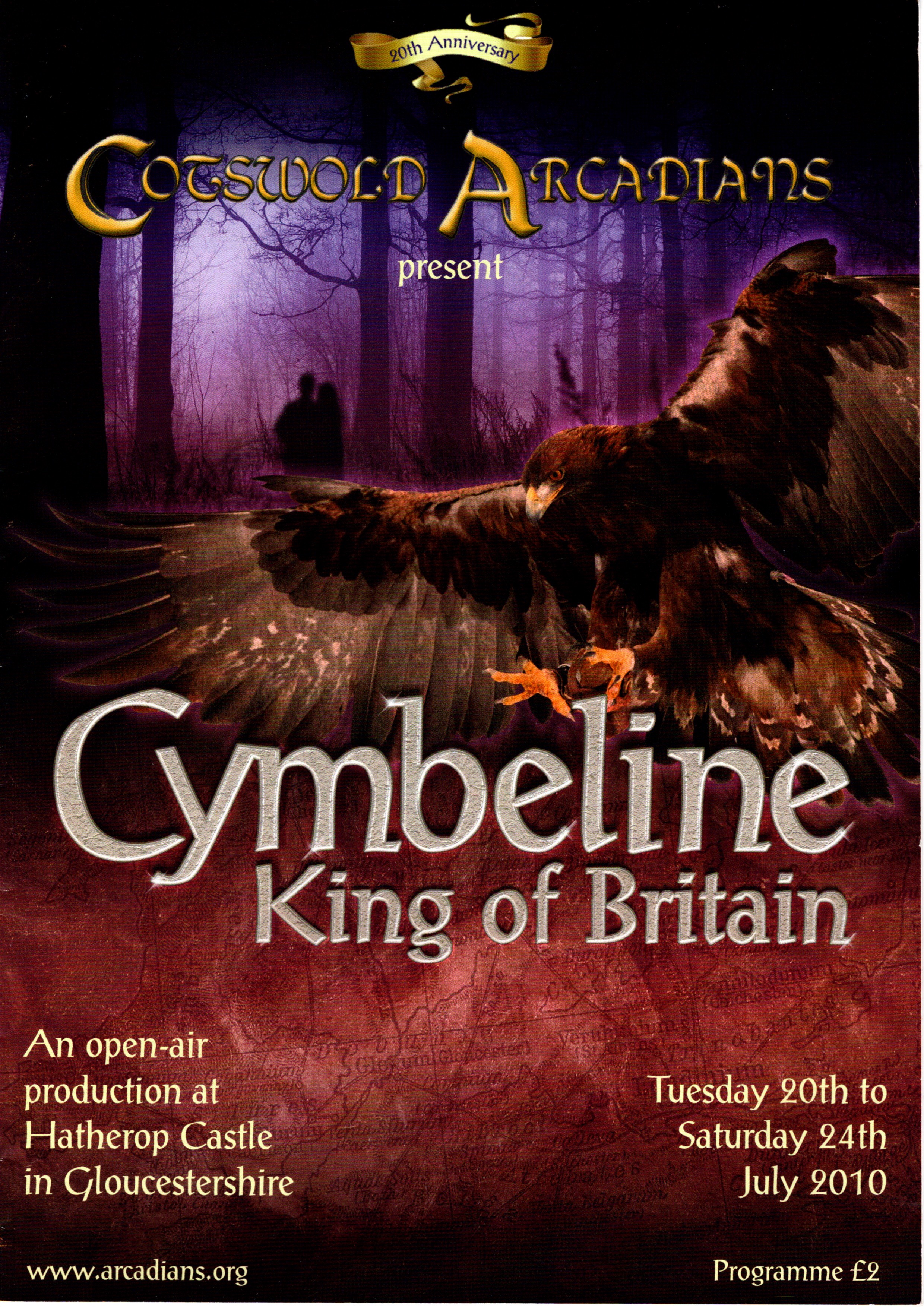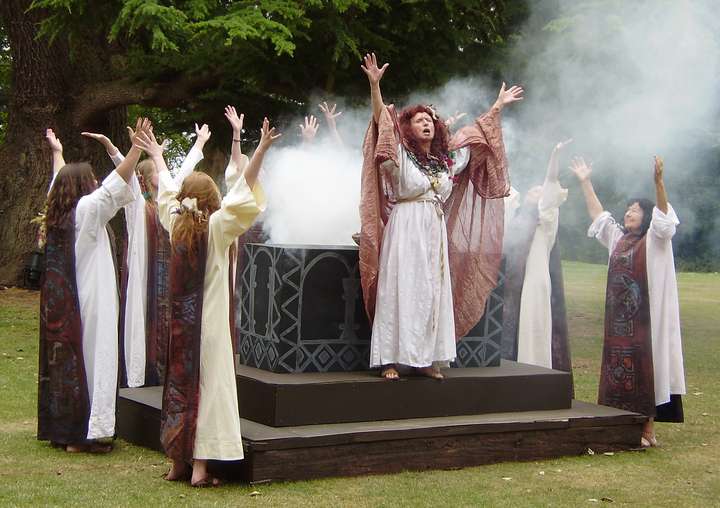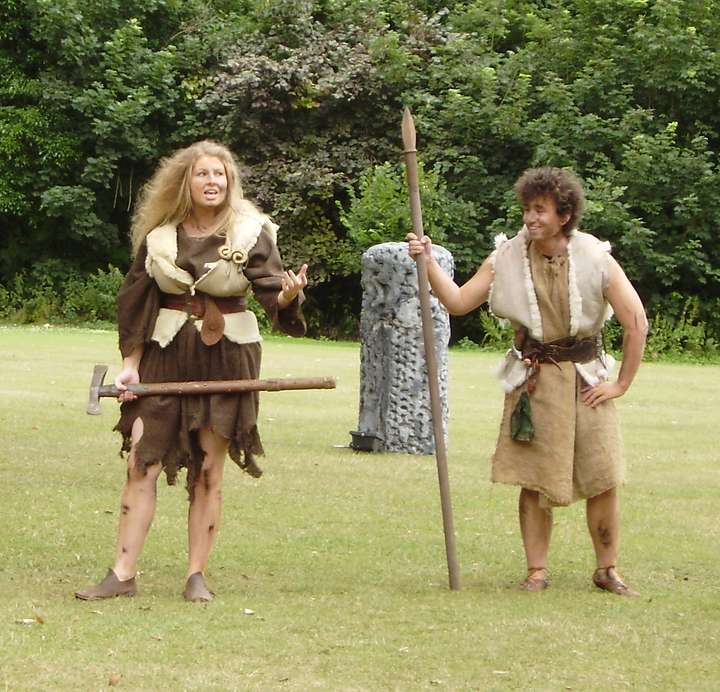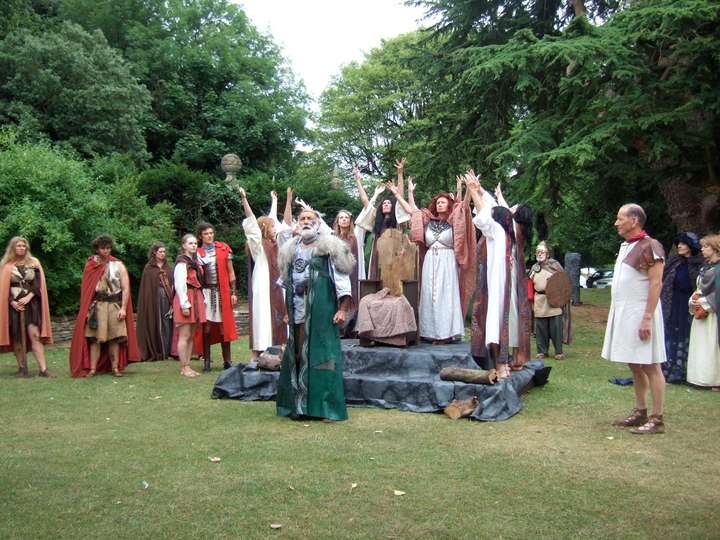
2010: Cymbeline
Cymbeline defies classification. It is a love story. It’s also a history play. And it contains strong elements of comedy and tragedy. Here we find Shakespeare’s wickedest female character, his most evil villain, his most delightful heroine, his most sardonic jailer, one of his funniest braggarts, and two of his most finely drawn faithful servants. We see love and loss, fidelity and attempted seduction, defiance and appeasement, violence and peace, honour and dishonesty, wrongdoing and forgiveness, guilt and redemption.
Set in 1st century Britain, rattling along between the British court, Rome and the Welsh hills, the action takes place against the backdrop of a Britain resentful of the influence of imperial Rome. It tells of king Cymbeline (whom the Romans have allowed to keep his throne in return for an annual tribute) and his three children: two were stolen from their nursery 15 years before the play starts, and have not been heard of since; and the youngest daughter, under pressure to marry her stepmother’s loutish son, has secretly married a commoner, now banished. The interaction between the three stories - the ill-starred lovers, the Roman invasions and the lost prince and princess - provided a fast-moving spectacle and a truly emotional ending.


